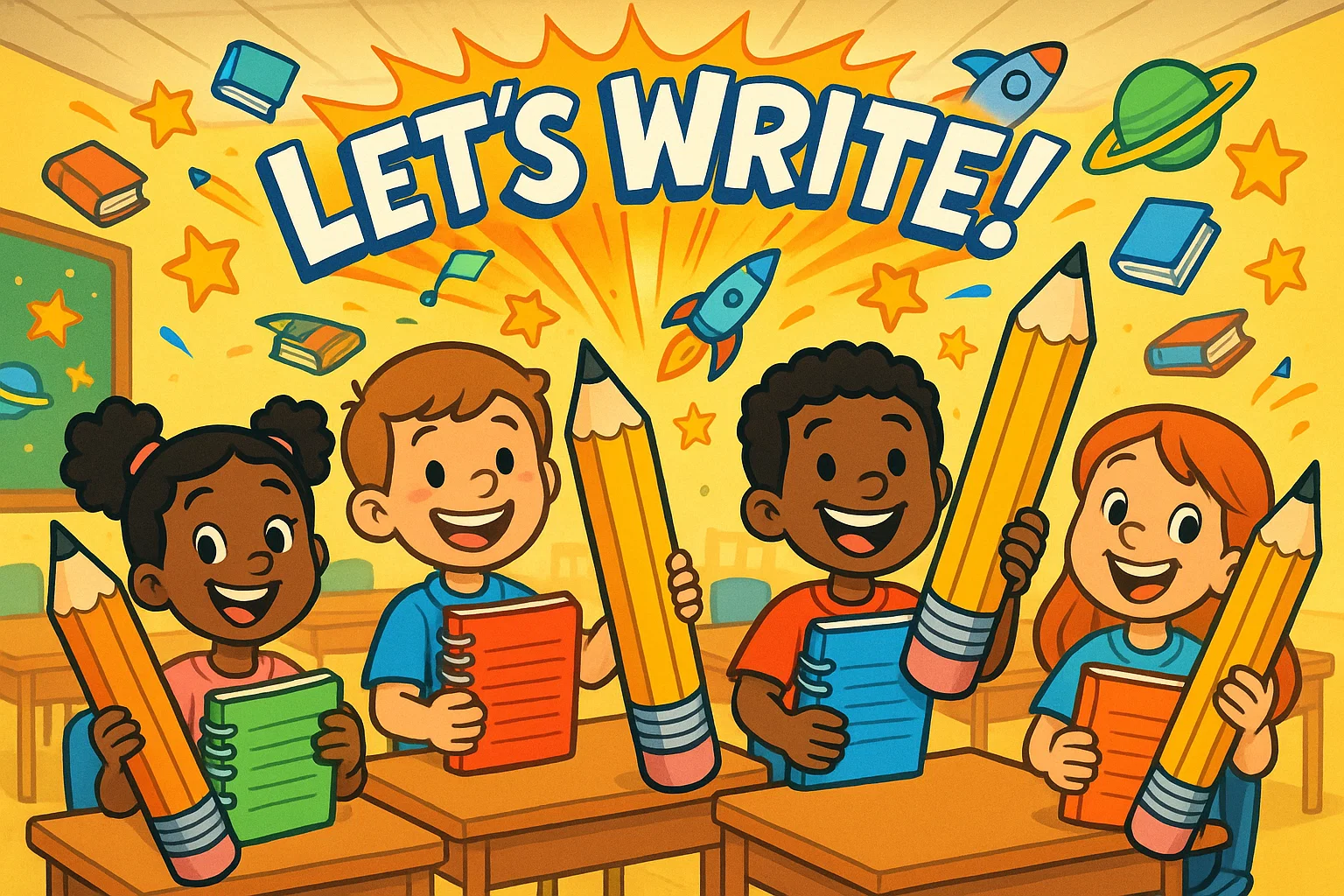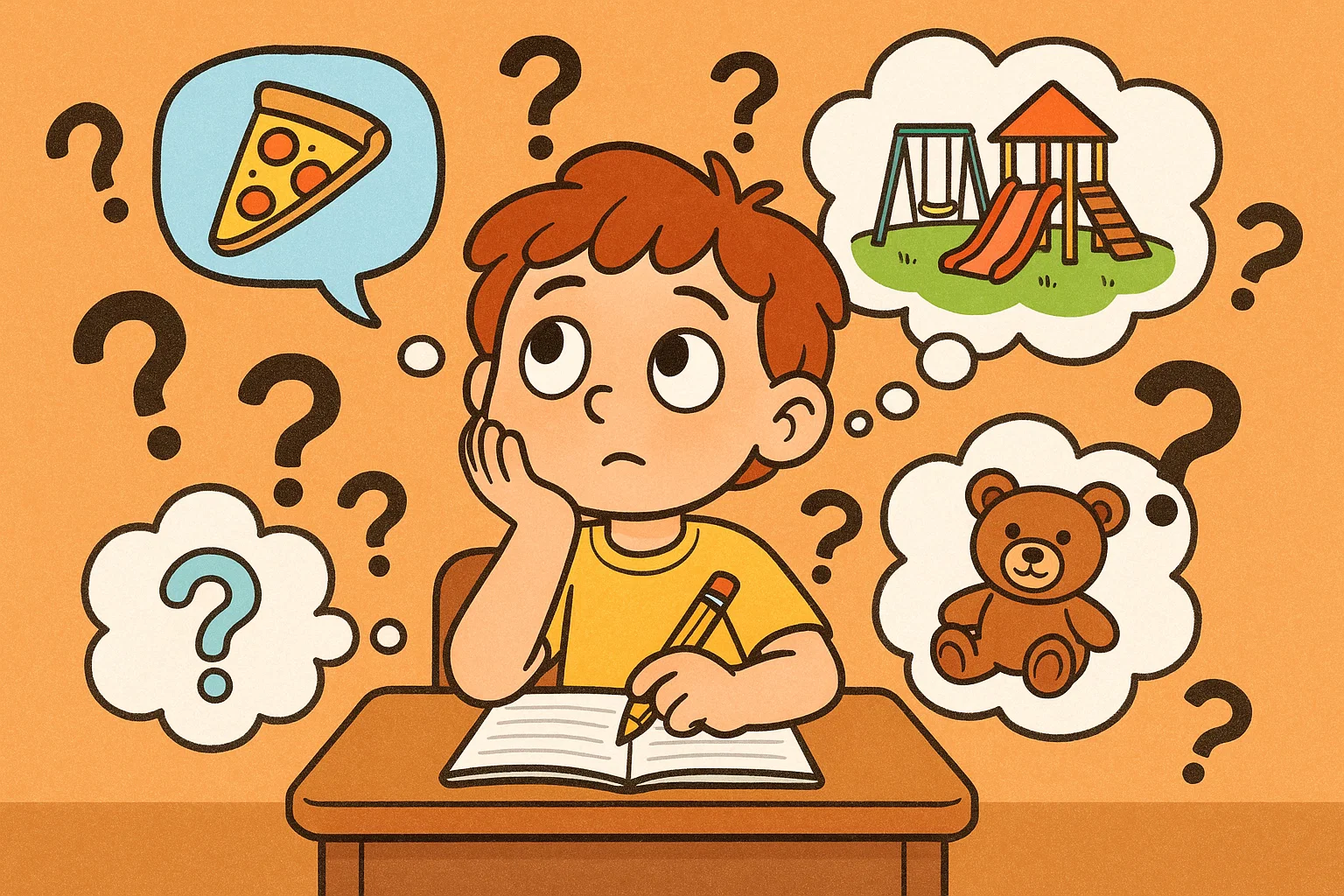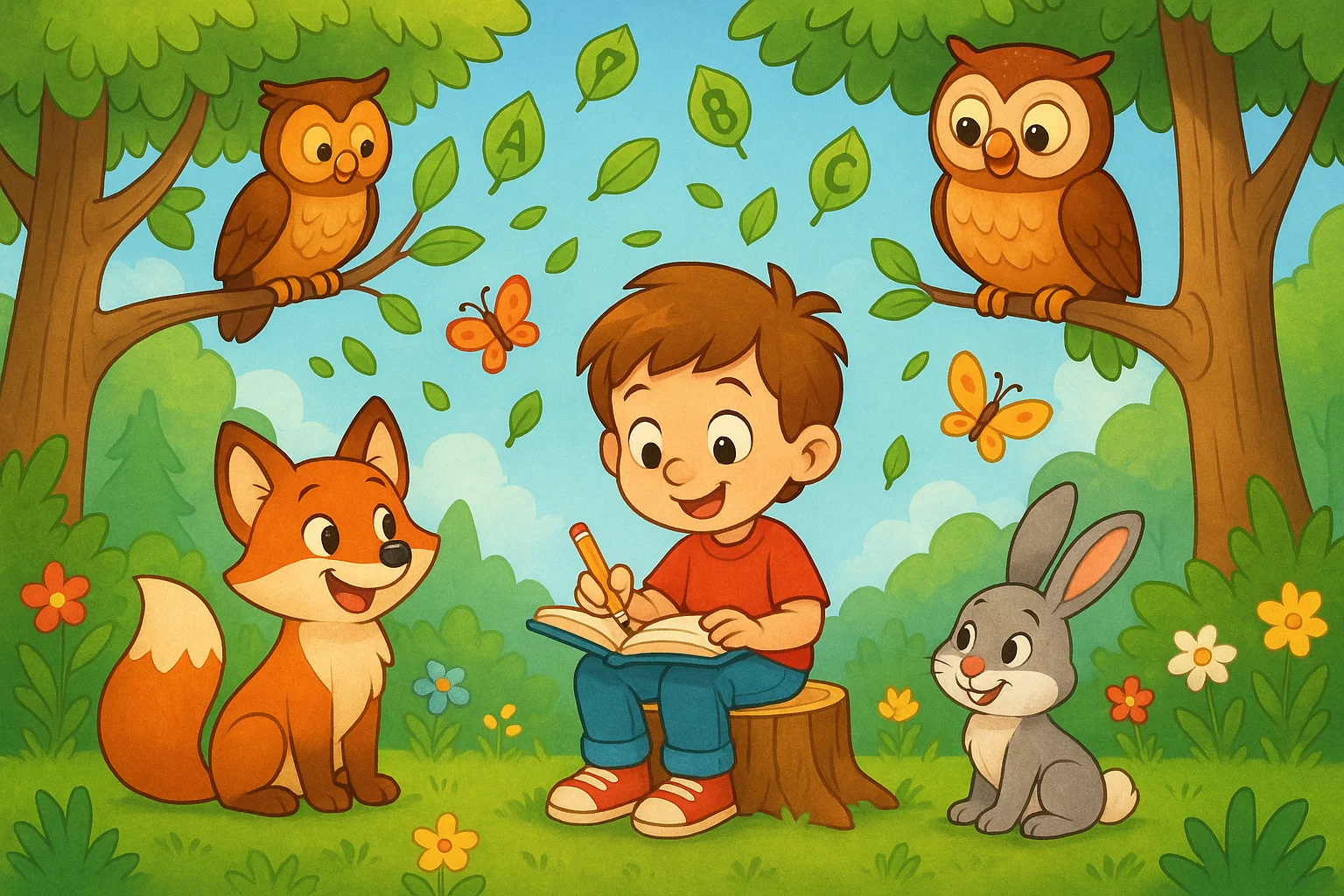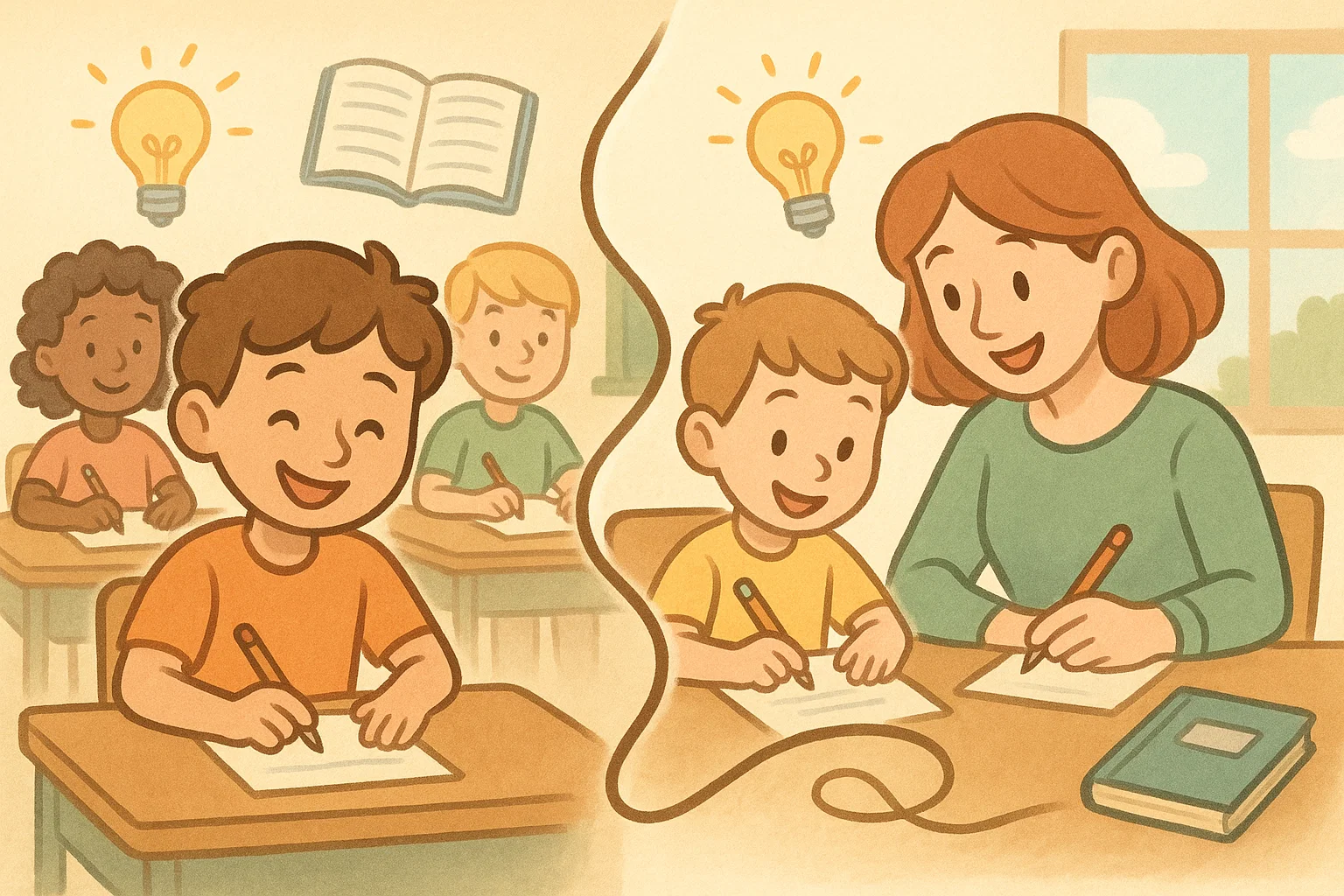1st Grade Writing Prompts: Fun and Engaging Ideas for Kids

Parents and educators often look for engaging ways to spark a love of reading and writing in young learners. The move from kindergarten to first grade is a key milestone, when early scribbles turn into real sentences and imaginative stories. That’s where great writing prompts make a difference — they unlock creativity, build confidence, and help children express themselves. This guide offers practical strategies and fun prompts to help first graders develop strong writing skills at school or at home.
Why 1st Grade Writing Prompts Matter

The use of targeted writing prompts is a cornerstone of effective early literacy development. They act as scaffolding, helping children build the cognitive and motor skills they need for confident first-grade writing. For first graders, the benefits go far beyond handwriting — they shape how children think, express themselves, and understand the world.
Writing prompts play a pivotal role in helping kids develop creativity, vocabulary, and early literacy skills. They provide a low-pressure environment for experimentation with language. For parents and teachers, they offer a tangible way to assess a child’s grasp of grammar, sequencing, and the ability to articulate thoughts. The structure of a prompt offers a safe “sandbox” for children to practice different types of writing, from simple descriptive statements to more complex narrative writing.
| Stakeholder | Primary Benefit of Writing Prompts | E-E-A-T Focus |
| Students | Boosts confidence, encourages self-expression, and improves fluency. | Experience & Skill Development |
| Parents | Provides insight into child’s inner world and progress in writing skills. | Trustworthiness & Engagement |
| Teachers | Facilitates targeted instruction, differentiation, and tracking of lesson outcomes. | Expertise & Authoritativeness |
Building Early Writing Confidence
One of the greatest hurdles for young authors is the fear of not knowing what to draft. Prompts can help shy kids and reluctant elementary students overcome this initial barrier. By giving them a starting point, like a sentence starter or a simple scenario, you remove the pressure of generating an original topic. This immediate reduction in cognitive load allows them to focus solely on the mechanics of forming letters, spelling words, and structuring a basic sentence. As they successfully complete short, fun writing activities, their confidence soars, turning writing from a chore into something they genuinely enjoy.
Boosting Imagination and Creativity
Open-ended creative writing prompts are powerful tools for sparking original ideas. Children possess boundless imagination, and the best prompts act as a gentle nudge to get those creative juices flowing. Instead of asking “Compose a story,” which can be overwhelming, a prompt like “What if your shoes could talk?” immediately focuses their thinking while leaving the plot entirely up to them. This shift encourages descriptive writing and helps children develop their own voice — key ingredients for strong storytelling.
Supporting Emotional Expression
Journaling prompts and self-reflection activities offer a vital, private outlet for children to process their emotions. Asking questions like “What made you feel proud today?” or “What helped you feel better when you were sad?” creates a safe, non-judgmental space for emotional expression. This regular journaling practice helps students connect their inner feelings with language, which is crucial for overall mental well-being and clear communication.
Narrative Writing Prompts for 1st Grade
Narrative writing is the foundation of storytelling. It involves sequencing events, developing characters, and establishing a setting. For 1st grade narrative writing, the focus should be on simple plot structures: a clear beginning, middle, and end. These fun writing prompts make practicing this genre exciting and accessible.
Story Starters
A compelling story starter is an excellent way to initiate the writing program. Give them the first sentence and let them finish the adventure.
- “Suddenly, the little red wagon started floating down the street.”
- “I opened the refrigerator and found a tiny, sparkly creature sitting on the milk carton.”
- “The first thing I heard when I woke up was a tap-tap-tap on my window.”
- “My dog has a secret—he can read!”
Adventure Prompts
Adventure prompts tap into a child’s desire for the extraordinary. Encourage them to express themselves as the hero, an intrepid explorer, or a helpful friend to an animal.
- Imagine you can shrink to the size of a mouse. What is your adventure in the kitchen?
- You find a map that leads to a hidden treasure in your backyard. What do you find?
- If you could ride a unicorn/dragon/talking elephant to school, what would your trip be like?
- Write a story about an animal finding its way home after getting lost in the jungle.
Everyday Experiences
Sometimes, the best stories come from the world we know. These prompts focus on helping elementary students connect their composing to their daily lives, improving their ability to observe and recount details (sequencing).
- Document the funniest thing that happened during recess this week.
- Describe your favorite memory from a family vacation or a trip to the park.
- What is the best part of your school day, and why?
- Draft a letter to your best friend describing your favorite story book.
Opinion and Expository Writing Prompts

While narrative is crucial, 1st grade writing should also introduce basic structures of expository and opinion pieces. These types of writing help students develop critical thinking skills by requiring them to form an idea and then support it.
Opinion Prompts
Opinion prompts allow students to state a preference and give a reason, which is the basic structure of persuasive composition.
- What is the best flavor of ice cream, and why?
- Should students have homework? Why or why not?
- If you could change one school rule, what would it be and why?
- Is it better to read a story book or watch a movie? Explain your choice.
Informative Prompts
Informative composing, or expository grade writing, requires students to recall facts or explain a process. This builds their early research and explanatory skills.
- Write three facts about your favorite animal.
- Explain the steps for how to make a peanut butter and jelly sandwich.
- Tell me how the weather changes in the fall/winter/spring/summer.
- What are three things you need to do to take care of a dog or cat?
Research Prompts
Simple “find out and report” activities are excellent ways to practice gathering and summarizing information. Use age-appropriate resources like simple non-fiction story books or vetted children’s websites.
- Find out and record three interesting facts about the moon.
- Ask a grown-up what their favorite thing to do as a child was and write a short paragraph about it.
- Research how a seed grows into a flower and draw the steps.
Funny and Creative Writing Prompts
Humor is a massive motivator. Creative prompts that focus on funny or outlandish concepts can help students who struggle to stay engaged. They encourage playful language and unconventional thought processes, keeping the creative juices flowing.
Silly Scenarios
- What would happen if your dog/cat could talk for one whole day? What would they say?
- You wake up and your head has turned into a giant tomato. Describe your day.
- Jot down a conversation between a sock and a shoe in the washing machine.
- If clouds were made of Jell-O, what flavor would you eat, and how would you get it?
Imaginative Twists
- Invent a new holiday. What do you call it, and how do people celebrate?
- Invent a new animal by combining two different ones (e.g., a “fish-gator”). What is it like?
- Formulate the instructions for how to be the best monster under the bed.
Make-Believe Characters
- Compose a superhero whose power is being able to smell pizza from two miles away.
- Prepare a letter from a talking toy to the child who owns them.
- Invent a magical creature that lives in your school playground. What does it do?
Journal Writing Prompts for 1st Graders

Journaling prompts are essential for practicing regular, low-stakes writing activities. Regular journaling improves fluency and provides an authentic context for grammar and sentence structure practice.
Gratitude and Positive Thinking
- Note down three things you are thankful for today.
- What is one thing that made you giggle out loud?
- Write a compliment to yourself or someone in your family.
Daily Reflections
- What was the most challenging thing you had to do today?
- What was your favorite part of the day, and why?
- If you could replay one moment from today, which would it be?
Goal-Setting Prompts
- What is one thing you want to learn to do next week?
- Draft a piece about a book you want to read.
- What is one kind thing you can do for a friend or family member tomorrow?
Descriptive Writing Prompts
Descriptive writing focuses on using vivid language, especially adjectives, to help the reader visualize a person, place, or thing. For first-grade students, this means consciously using sensory words.
Describe a Favorite Place
- Describe your favorite place in the whole world. What does it look like, and how does it make you feel?
- Describe the playground at recess using as many colors as you can.
- Construct a descriptive passage about your bedroom.
Describe Using 5 Senses
This is an excellent exercise for practicing descriptive writing. Ask them to focus on one subject and use at least three senses.
- Describe an apple (or a banana) using your five senses: sight, smell, taste, touch, and sound (the crunch!).
- Describe a rainy day (or a sunny day) using all five senses.
- Describe a bonfire or fireplace — focus on the smells, sights, sounds, and warmth.
Describe a Special Event
- Jot down details about your last birthday party. Use many descriptive words.
- Detail a holiday meal—what did the food smell like? What did the table look like?
- Describe a favorite toy or object using lots of details about its color, texture, and size.
Animal and Nature Writing Prompts

Children are naturally curious about the world around them. Animal writing and nature topics are highly engaging and provide endless possibilities for both informative and imaginative stories.
Writing About Pets
- Describe your pet’s personality and why you love them.
- If you could have any pet in the world (even a fantasy one), what would it be?
- Compose a day in the life of your pet.
Wild Animals Prompts
- Imagine you are a tiger/monkey/penguin. Where do you live, and what do you eat?
- Write an informative paragraph about a zoo animal, using facts you know.
- Invent a new noise for an elephant/bear. What does it sound like?
Weather and Seasons Prompts
- Set down the things you like to do outside in your favorite season.
- Imagine you are a snowflake falling to the ground. What do you see?
- If you could control the weather for a day, what would you make happen?
Picture and Sentence Starter Prompts
For struggling authors or those who need a clear visual guide, picture prompts and explicit sentence starters are incredibly effective.
Picture Prompts
Show a simple, evocative image (a child chasing bubbles, a strange house in the woods, a smiling animal wearing a hat). Ask them to:
- Describe what they see in the picture.
- Draft a story about what happened right before the picture was taken.
- Formulate a sentence about what will happen next.
Sentence Starters
These simple sentence starters help first graders practice forming complete thoughts and sentences.
| Focus | Sentence Starter | Extension Goal |
| Narrative | One day, I saw a… | Develop sequencing and descriptive detail. |
| Opinion | I think the best… is… because… | Practice stating an opinion with a reason. |
| Descriptive | The tree looked… and felt… | Use vivid adjectives for sensory description. |
| Imaginative | If I could fly, I would… | Encourage open-ended creativity. |
Super Sentences
Take a short, basic sentence and challenge the student to make it a “super sentence” by adding more detail.
- Basic: The dog ran.
- Challenge: The little brown dog ran fast across the green park.
- Basic: The girl is reading.
- Challenge: The girl is reading a funny story book about a talking cat.
Tips for Using Writing Prompts at Home or in Class

At this age, the process of writing is far more important than the final product. The goal is to make writing a positive, recurring experience.
Making Writing Fun and Stress-Free
- Offer Choice: Always provide at least three writing ideas or story starters so the child feels in control of their work.
- Focus on Fluency, Not Perfection: For regular journaling and initial drafts, ignore spelling and grammar mistakes. The primary goal is to get their thoughts onto the page. You can address editing later.
- Use Tools: Let them record their ideas with colorful pens, on fun writing worksheets, or even dictate to you if their motor skills are still developing.
Encouraging Reluctant Writers
Sometimes, even the best fun writing prompts don’t work right away. If you have a reluctant author:
- Be a Co-Author: Sit with them and start the story together. Draft the first sentence, then they contribute the second, and so on.
- Use Picture Prompts: Visual cues often help children get past the “I don’t know what to write” hurdle.
- Use Drawing: Allow them to draw their story first, then add captions or a few sentences to illustrate their picture. This links art and creativity to literacy.
Tracking Progress with Journals or Portfolios
A portfolio of a child’s 1st grade writing is a powerful motivator.
- “Brag Book”: Keep a special folder where the child can see their early work next to their later, more developed pieces. Seeing their progress in forming longer sentences or more complex narrative writing is a huge confidence boost.
- Date Everything: This helps you and your child see how their writing improves over time — an important part of showing progress and growth.
- Focus on Strengths: When reviewing their work, always point out what they did well first: “Your descriptions of the animal writing were so strong!” or “You used excellent sequencing in this story.”
Frequently Asked Questions
How do I motivate my 1st grader to write?
Motivation in first graders comes from relevance and joy. Use creative writing prompts that tie directly to their interests (dinosaurs, favorite TV characters, sports). Frame the composition as a privilege, not a punishment. Create a special writing nook, use colorful supplies, and celebrate every finished piece, no matter how short. Remember, the key is fostering an engaging writing experience.
How many sentences should a 1st grader compose?
The goal is quality over quantity, especially when prompts focus on a specific genre. Generally:
- Beginning of 1st Grade: 1-3 complete sentences for a simple response or prompt.
- Middle/End of 1st Grade: 3-5 complete, coherent sentences that form a small paragraph or a simple story (beginning, middle, end).
- Expert Note: If they can construct one detailed, clear sentence using good punctuation, that is a massive success. Avoid setting rigid minimums; focus instead on encouraging them to add one more detail or one more descriptive word to their existing sentence.
What are some fun writing games for kids?
- Pass-the-Story: One person contributes the first sentence, folds the paper to hide it, and passes it to the next person to continue the story.
- “What If” Jar: Keep a jar full of simple fun writing prompts and funny scenarios. They pick one and draft/draw their answer.
- Mystery Box: Place a familiar object in a box (e.g., a lemon, a feather). The child must prepare a descriptive passage about the object without looking at it, using their other senses.
How often should kids practice writing?
Consistency is vital for building writing skills and fluency. Aim for a little bit every day.
- Daily: 5-10 minutes of regular journaling or a quick sentence starter response.
- Weekly: One longer creative writing or narrative writing session (15-20 minutes).
A consistent writing program that incorporates varied and fun writing prompts is the most effective way to help students develop lifelong literacy skills.
